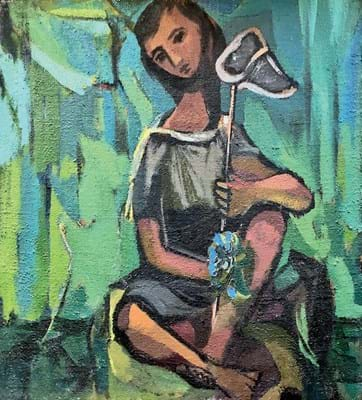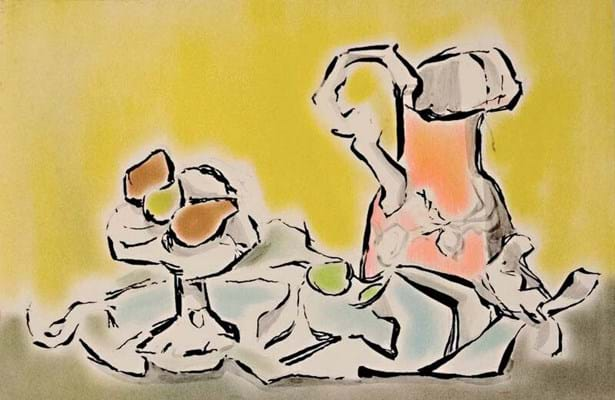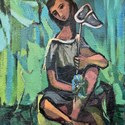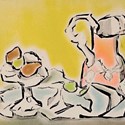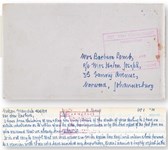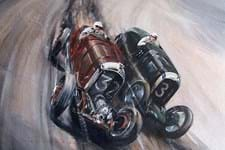From September 7-October 7, The Court Gallery in Somerset stages a major survey of Lauder’s early paintings, complete with a fully illustrated catalogue (which includes the eyeglasses story as recounted by Lauder’s wife Marian).
Born in Edinburgh, Lauder worked towards different forms of visual representation as he observed the development of modernism in Europe.
He was not alone. Painters like him who got their start in the 1920s, he later wrote, had to cope with the fact that tradition already seemed “far distant and vague in outline. A work of art now could be made out of almost anything: old matchboxes, the shapes of guitars, and collaged sheets from Le Journal.”
He was drawn to the new, non-traditional art from this period, looking to the output of artists such as Braque, Matisse and Picasso.
Difficult transition
Though categorised as early paintings, works in this show were not executed until the 1940s and ’50s, following Lauder’s studies at the Royal College of Art and his service during the Second World War. Following this he settled on the Isle of Man, concentrated on painting, and experienced another difficult transition – this time from a period of conflict to civilian and family life.
Pictures at The Court Gallery were produced in a variety of media including oil, watercolour, and ink. Generally the subject matter falls into two categories: figurative works and still-lifes. In the latter category he explored colour and design, experimenting in later examples with texture and depth.
Other paintings reflect his interest in music by composers such as Haydn, Bach and Debussy. For example, in Haydn String Quartet, a sequence of nine abstracted compositions, he represents the strains of the music in watercolour, working to depict the flow of sounds with paint.
Though he never formally aligned himself with a specific group or movement, the pictures he created fit easily into the wider realm of post-war British art. Like those of his contemporaries, Lauder’s works reflect a drive to use abstracted forms to express a world altered by conflict. Pictures from this period have aesthetic ties to those from the modern Paris School. But there are certain key differences as well, which the gallery seeks to draw out in its retrospective.
Softer edge
“In Lauder’s figurative paintings there is a warm humanity, completely without the sardonic elements that so often prevail among the more hard-edged modernists,” writes the gallery’s Denys Wilcox in the exhibition catalogue.
Wilcox adds that in compositions such as Boy with a Butterfly Net Lauder “celebrates his sitters, never deriding them”.
Lauder’s work grew more abstract in later years. In the 1960s he focused on watercolours and his naturalistic style drew the attention of London dealership Agnew’s, which he worked with into the 1980s.
He exhibited at a number of other UK galleries including The Redfern Gallery in 1950, Reid Gallery in Cork Street in 1964, and the Scottish Gallery, also in Cork Street, in 1990. Lauder had further one-man shows at Galerie Christiane Cloots in Brussels towards the end of his life.
The Court Gallery now represents Lauder’s estate and includes 95 works in the exhibition, most of which are available for sale.
It specialises in Modern British and French art, represents several other estates and publishes at least one catalogue per year.


